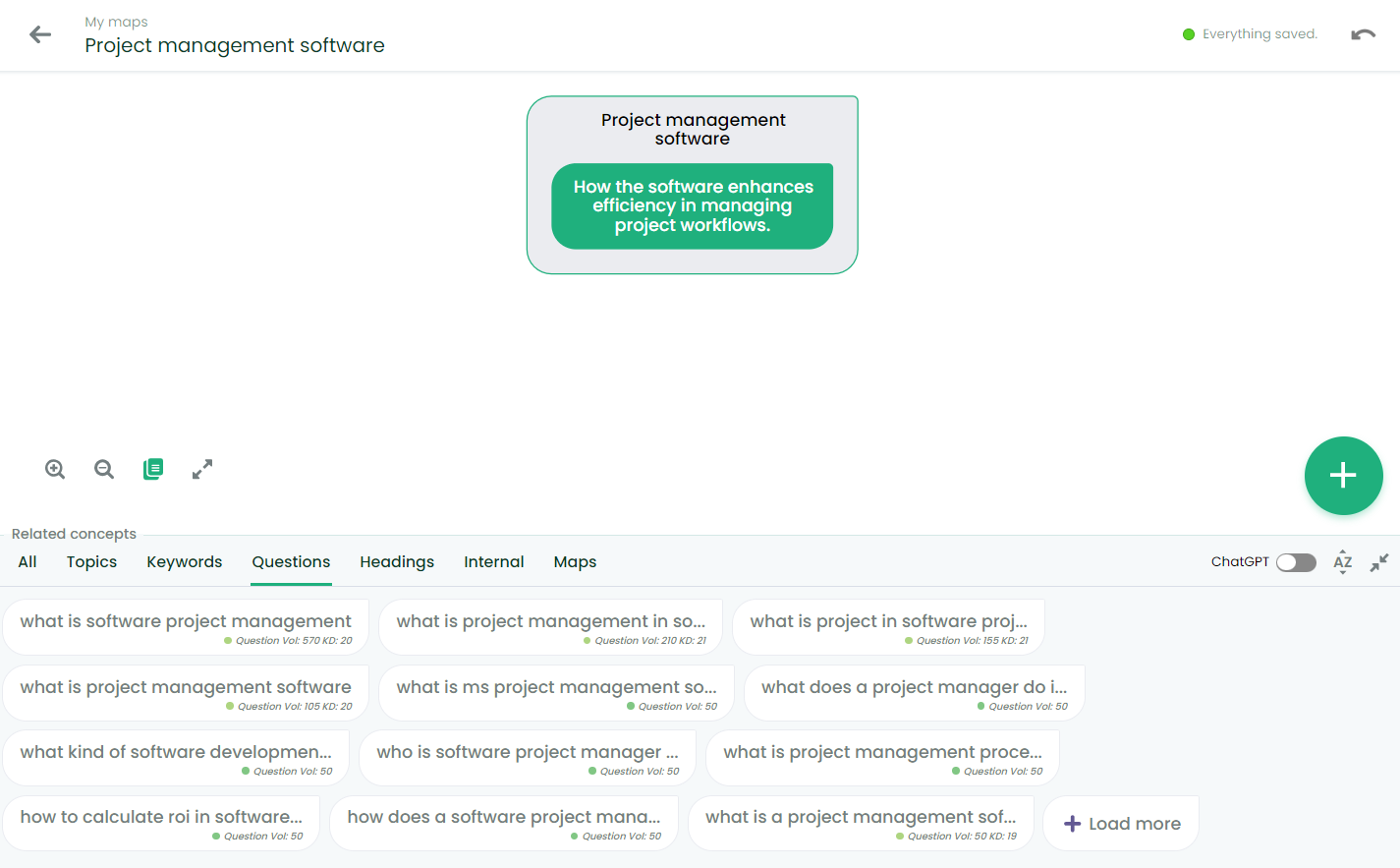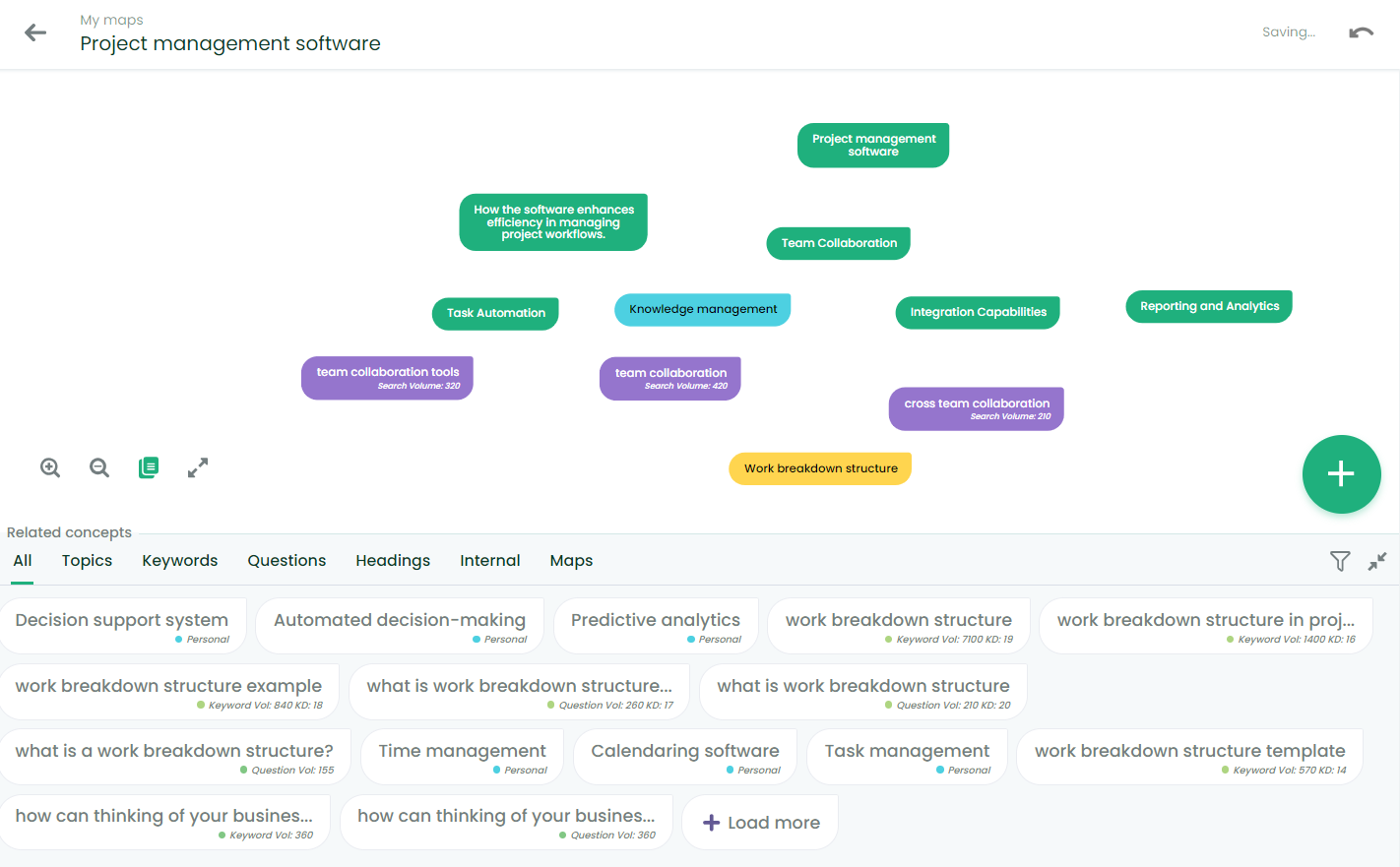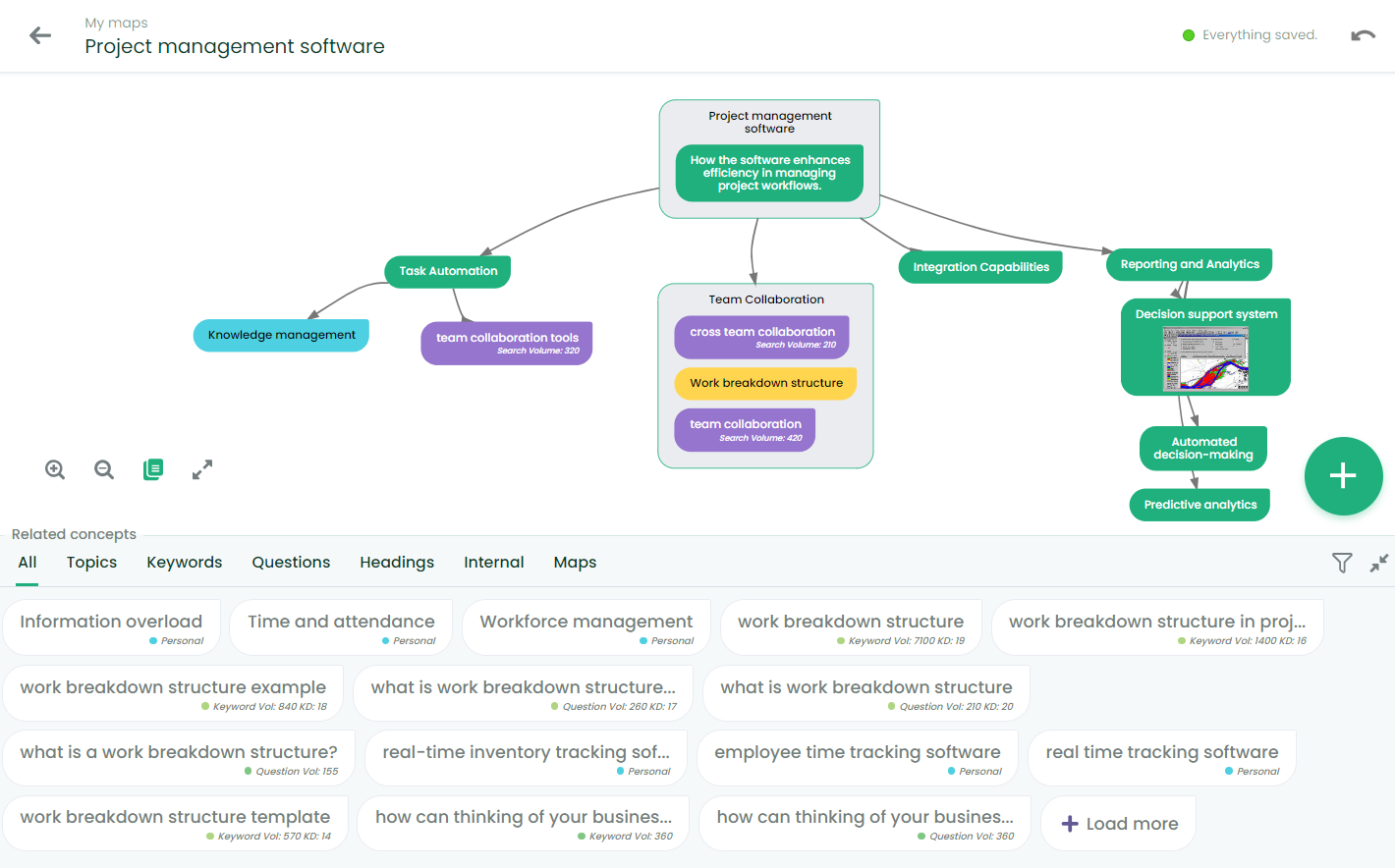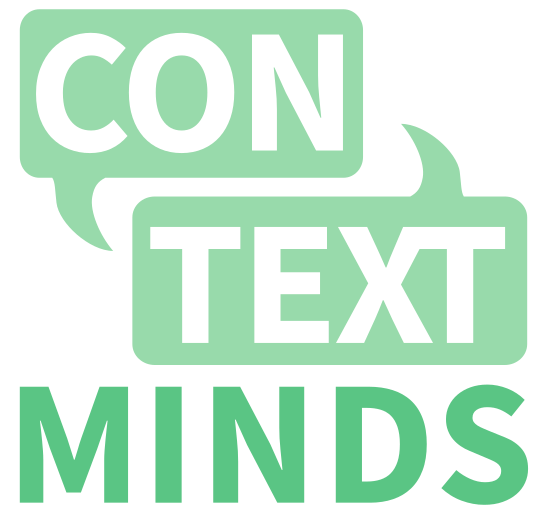Concept Maps: Your Tool for Smarter Idea and Research Sharing
Imagine you're crafting a content strategy buzzing with innovative ideas. You've done your research, gathered your notes, and now you face a critical challenge: conveying these complex concepts clearly to your team or clients. As a result, clear communication becomes increasingly important. It's not just about sharing ideas; it's about ensuring them resonate with others. This is where the magic of concept maps comes into play.
Unlike traditional linear notes, concept maps allow you to visually organize and connect your thoughts, making complex concepts easier to grasp and share. By mapping out your thoughts, research, and strategies, you create a shared language that everyone can speak.
In this article, we'll explore how concept maps can transform the way you communicate your research and ideas and make them more accessible, engaging, and actionable for everyone involved.
Let's get started!
Streamlining Communication: Common Challenges and Strategies
Getting your brilliant ideas across to clients or teammates can feel like trying to fit a square peg into a round hole. Let's explore common roadblocks you might encounter when sharing complex ideas and how to overcome them.
- Complexity Overload: Often, our ideas are intricate and packed with details and nuances. Without a clear structure, these ideas can overwhelm your audience, leading to confusion rather than clarity. The key is to break down complex concepts into digestible chunks, ensuring your audience can easily follow along.
- Lack of Visual Aids: Words alone are sometimes not enough. Visual aids can be powerful tools for conveying complex ideas. Without them, you risk losing your audience's attention or failing to fully illustrate your points. Employing diagrams, charts, or concept maps can transform abstract ideas into something tangible and understandable.
- Misalignment with Audience's Understanding: Assuming that your audience has the same level of understanding as you do is a common pitfall. It's important to gauge their knowledge and tailor your communication accordingly, avoiding technical jargon or over-simplifications that can lead to misinterpretation.
- Inadequate Feedback Mechanisms: Without proper feedback, it's challenging to gauge if your message is resonating. Implementing structured feedback sessions help understand the audience's reception of your ideas and refining your approach accordingly.
Now, let's shift gears and talk about how you can overcome these challenges. We'll explore three key strategies that can transform your communications from good to great.
- Preparing Engaging Presentations: Creating captivating presentations goes beyond just assembling slides. It involves weaving your points into a compelling narrative, using stories, examples, and visuals to bring your ideas vividly to life.
- Employing Digital Collaboration Tools: In our digital era, the right tools are indispensable. Mind mapping tools like ContextMinds offer a way to organize and visually present your ideas, enhancing understanding and collaboration. These tools are essential in connecting your vision with your audience's comprehension.
- Practicing Active Listening for Better Feedback Incorporation: Active listening transcends mere hearing; it involves deep understanding and integration of feedback. Fostering an environment of open dialogue, where questions are encouraged and feedback is valued, not only refines your ideas but also cultivates a collaborative spirit.
The concept map is a crucial tool in our quest to improve communication and collaboration in your content strategy. By using visual and interactive tools, you can organize and present complex ideas in a more engaging and accessible way. Let's explore it in greater detail.
What exactly is a concept map, and how can it revolutionize your strategy planning?
A concept map is a visual representation of ideas and their interconnections. It serves as a roadmap of your thought process, outlining how one concept relates to another.
Concept maps play a crucial role in content strategy. It helps you visualize the relationship between different ideas, themes, and research findings. This visualization is key to understanding your own strategy more deeply and communicating it effectively to others.
Whether you're brainstorming new content ideas, organizing research data, or planning your content calendar, a concept map brings clarity and coherence to your process.
Let's understand with a simple example.
For a SaaS company that offers cloud-based CRM solutions, concept maps can serve as a powerful tool for developing and communicating a comprehensive content strategy.

As shown in the above image, the central theme of the map is "CRM Software Benefits." Radiating from this core are various branches representing key subtopics such as "Increasing Sales Efficiency," "Improving Customer Relationships," "Data Analysis and Reporting," and "Cost-Effective Scaling."
Each of these subtopics branches further into more specific aspects. For instance, under "Increasing Sales Efficiency," the map might include elements like "Automated Sales Processes," "Lead Tracking," and "Performance Metrics." Similarly, "Improving Customer Relationships" could branch out to include "Personalized Customer Interactions," "Customer Feedback Analysis," and "Retention Strategies."
This concept map effectively organizes the diverse aspects of CRM software, and allows the company to visualize how different features and benefits are interconnected clearly. It helps in identifying key areas to focus their content on, such as creating blog posts about the role of CRM in boosting sales, producing explainer videos on the software's data analysis features, or developing case studies that highlight successful customer relationship management stories.
With a concept map, you can easily spot connections and patterns that might not be apparent in linear notes. It also allows for flexible thinking, seamlessly integrating them into the existing map. This adaptability makes concept maps an invaluable asset when building a solid content strategy.
Advantages of a concept map in strategy discussions
Concept maps are indispensable in strategy discussions, offering clarity, fostering collaboration, and accommodating the dynamic nature of brainstorming. By integrating them into your strategy sessions, you're not just organizing ideas; you're enhancing how your team thinks, collaborates, and innovates. Let's explore the numerous advantages it offers in sharing your ideas and research with the team:
- Enhance Clarity and Understanding: Concept maps convert complex ideas into visual formats, making it easier for everyone to grasp the strategy's scope and details.
- Facilitate Collaboration and Brainstorming: Concept maps serve as a central platform for team members to contribute ideas, encouraging diverse perspectives and cooperative brainstorming.
- Streamline Decision-Making: By visually outlining strategies, concept maps help identify gaps and opportunities, leading to more informed decision-making.
- Simplify Presentation of Complex Information: Concept maps break down intricate concepts into simpler elements, making it easier to present and discuss complex strategies.
- Offer Adaptability and Flexibility: Concept maps can be easily updated and adjusted, making them ideal for evolving strategies and ongoing projects.
A Detailed Guide to Crafting a Concept Map for Your Content Strategy
Creating a concept map can seem daunting at first, but it's a straightforward process that brings immense clarity and focus to your content strategy. Let's walk through this step by step.
Step 1: Setting Clear Objectives:
Setting clear objectives is about defining your destination before you start your journey. It ensures that every step you take in creating your concept map is purposeful and aligned with your end goals.
It's about asking yourself, "What are the key messages or insights I want to communicate through this map?" Setting objectives is vital because it guides the entire mapping process, ensuring that every element you include serves a specific purpose and contributes to your overarching goals.
Objectives in a concept map vary depending on your project or strategy. They can range from demonstrating the benefits of a new product, explaining a complex process, and illustrating market trends to mapping out a content strategy. Essentially, your objectives are the 'north star' that keeps your concept mapping focused and effective.
With tools like ContextMinds, you get the added advantage of real-time insights and data, making your concept map a visual representation of ideas and a dynamic, informed, and strategic tool in your content planning arsenal.
Let's understand with an example. For a B2B SaaS company offering project management software, the objective might be to showcase how the software enhances efficiency in managing project workflows.

This clear objective guides what topics and data are relevant for inclusion in the map. It ensures that each piece of information added reinforces and illuminates this primary goal.
Here, ContextMinds offers an invaluable feature with its real-time web results. It can provide the latest information, such as emerging trends in project management or relevant questions people ask about similar software. This up-to-date data is crucial in shaping a relevant concept map that resonates with current industry standards and audience needs.
Step 2: Organizing Ideas into Subtopics
It is a critical step in concept map creation. This process involves breaking down a broad theme into more focused, manageable parts. Without this structure, your concept map can become a jumbled mess of ideas, making it hard for anyone to follow or find value. When your ideas are not organized, key points can get lost in the noise, leading to confusion or misinterpretation.
Continuing with our example of the project management software company, let's see how this works.
The main objective is to demonstrate the software's efficiency in project workflows. This broad theme is then divided into specific, focused areas: "Task Automation," "Team Collaboration Features," "Integration Capabilities," and "Reporting and Analytics."
Each subtopics targets a unique aspect of the software, allowing for a detailed exploration of its features and benefits.
"Task Automation" might delve into how the software minimizes manual work, while "Team Collaboration Features" could explore tools for effective team communication and coordination. "Integration Capabilities" can highlight how the software seamlessly works with other tools, and "Reporting and Analytics" can demonstrate how the software aids in decision-making with data-driven insights.

In this structured approach, ContextMinds can play a subtle yet impactful role. Its ability to help categorize and visualize these subtopics enhances the clarity and effectiveness of the concept map, providing an intuitive platform for organizing ideas, ContextMinds ensures that each subtopic is well-defined and positioned in a way that contributes to the overall narrative of the concept map.
Step 3: Visualizing Connections Between Concepts
Visualization is where the individual pieces come together to form a cohesive, interconnected narrative. This step is crucial because it moves your map beyond being a simple collection of ideas and transforms it into a dynamic, integrated representation of how these ideas interplay and support each other.
The visualization of connections addresses several key challenges. First, it helps in revealing the relationships between different ideas, which might not be immediately apparent. This can lead to new insights and a deeper understanding of the subject.
Second, it aids in identifying potential weaknesses or inconsistencies in your strategy by showing where connections are missing or weak.
Lastly, visual connections make your concept map more engaging and easier to comprehend, especially for visual learners or stakeholders who are not deeply immersed in the content.
Continuing with our project management software example, visualizing connections can highlight how different features of the software complement and enhance each other.

For instance, you might draw a line from "Task Automation" to "Team Collaboration Features" to illustrate how automating routine tasks frees up time for more effective team collaboration.
Another connection could be drawn between "Integration Capabilities" and "Reporting and Analytics," showing how the ability to integrate with various tools leads to more comprehensive data analysis and reporting.
In this context, ContextMinds offers a subtle yet powerful advantage. Its interface allows for easy drawing and modification of these connections, enabling you to experiment with different configurations to best illustrate the relationships among your ideas.
This not only enhances the visual appeal of your concept map but also ensures that the underlying narrative of your strategy is clear and compelling.
With ContextMinds, you're not just mapping out ideas; you're weaving a story that clearly articulates how each component of your project management software interconnects to deliver a seamless, efficient workflow.
Best Practices for Creating and Sharing Your Ideas Using Content Maps
Creating and sharing concept maps can significantly enhance teamwork and communication. These visual tools are not just for organizing ideas; they're about building a shared understanding and engaging everyone on the team. Let's explore the best practices for using concept maps to ensure your team can effectively collaborate and share ideas and research.
- Establish a Focused Central Idea: Begin your concept map with a clear, central idea. This central theme acts as the foundation of your map, guiding its development and keeping everyone's efforts aligned. For example, if your focus is on improving customer service, this becomes the core from which all related ideas will branch. This approach ensures that every part of the map contributes to a unified goal, keeping discussions and research targeted and relevant.
- Organize with a Logical Hierarchy: Structure your map hierarchically for clarity and ease of understanding. Start from broad concepts and narrow down to more specific details. This hierarchical structure helps visualize the relationships between different ideas and ensures that the map remains navigable and coherent. A well-organized map prevents confusion, making it easier for team members to follow and contribute effectively.
- Incorporate Current Data and Research: Integrate up-to-date research and data into your map. For instance, adding the latest market trends or customer feedback can provide valuable context and insights. Tools like ContextMinds are particularly useful here, allowing you to add real-time data directly into your concept map. This ensures that your strategy is grounded in factual information, enhancing its relevance and effectiveness.
- Foster Active Discussions Around the Map: Use the map as a basis for regular team discussions and brainstorming. Encourage everyone to voice their thoughts, offer feedback, and suggest improvements. This active involvement turns the concept map into a collaborative tool, constantly evolving with the team's collective input and understanding.
- Ensure Accessibility for All Team Members: Make sure the concept map is accessible to every team member. It will allow team members to reference, review, and update the map as needed, ensuring ongoing engagement and contribution from everyone involved.
Embracing Concept Maps for Effective Content Strategy: Your Next Steps
Concept maps are more than just a method for organizing ideas—they're a pathway to clearer, more collaborative, and effective content development. From breaking down complex ideas into understandable segments to fostering a collaborative environment, concept maps have proven to be more than just visual aids. They are essential instruments for effective communication and strategic planning.
So start by experimenting with concept maps in your next project. Whether you're developing a new marketing campaign, planning a content calendar, or brainstorming product development ideas, apply the techniques we've discussed. Remember, the goal is to make your ideas clear, organized, and engaging for everyone involved.
By adopting concept maps and tools like ContextMinds, you're not just organizing information; but also enhancing how your team collaborates, communicates, and innovates.
With its intuitive design and powerful features like real-time web results and AI-generated paragraphs, ContextMinds can significantly streamline creating and sharing your concept maps. It's designed to think alongside you, providing relevant topics, keywords, and data that enrich your content strategy and save you valuable research time.

Useful links
Contact info
+420 607 881 942
info@contextminds.com
ContextMinds s.r.o
Blanická 922/25, Prague, Czechia
All Rights Reserved | EMC Engineering, s.r.o.









